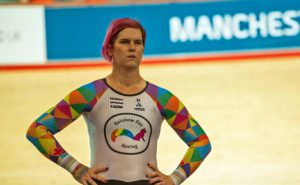The most famous penguin of modern times must be a chick named Tango, who hatched in Central Park Zoo in 1999. The unusual thing about her was that her parents, Roy and Silo, were both males; the pair had reportedly tried to hatch a rock as if it were an egg, and even attempted to kidnap eggs from other couples, before zookeepers decided to let them incubate a surplus one. Tango was the happy result. The family became the subject of a children’s book, And Tango Makes Three. Slightly awkwardly for champions of same-sex adoption in the animal world, however, the heart-warming tale was later marred by Silo abandoning Roy for a female penguin.
This particular romance may have ended in heartbreak, but Silo and Roy aren’t unique: over half a dozen zoos around the world are home to pairs of “gay penguins”, many of which have successfully reared chicks. Wild seabirds may also be that way inclined: a study of Laysan albatrosses in Hawaii reports that 31% of pairs were female-female, raising chicks that had been fathered elsewhere. A few years ago, Labour MP Dawn Butler stated that “90% of giraffes are gay”; though this claim was roundly trashed, it seems to contain a kernel of truth, in that male giraffes have indeed been seen engaging in behaviour that looks a lot like gay sex — at least as often as they have been observed mating with females.
Same-sex couplings are everywhere in the animal kingdom, as I learned this month at a Royal Society conference dedicated to discussing possible explanations for the seeming biological paradox of same-sex sex. On the face of it, it’s a behaviour that doesn’t make sense in evolutionary terms: an exclusive preference for the same sex is a trait that’s not likely to be passed on to offspring. Even opting for same-sex partners just some of the time requires an explanation: there would seem to be a huge evolutionary advantage in focusing one’s attentions towards the opposite sex, since it would make you more efficient than a competitor who mates indiscriminately.
Theories vary hugely depending on the species and context. Insects, for instance, just may not have particularly sophisticated methods of detecting partners of the opposite sex. If your entire brain is little more than a cluster of nerves, then some cases of mistaken identity are perhaps inevitable. At the other end of the spectrum, sex has a complex social function in species like primates. Our close relatives the bonobos frequently have group sex sessions that make human attempts at polyamory and pansexuality pale in comparison. In this species, what was once an adaptation purely for reproduction has taken on an additional role in maintaining both opposite-sex and same-sex social bonds, a bit like how our tongues initially evolved for tasting and swallowing food, but are now also indispensable in allowing us to speak. It’s different again in seabirds, where the care of chicks is a co-operative enterprise requiring hard work and trust between two pair-bonded adults. If “lesbian” albatross couples are effective at raising their chicks together when there aren’t enough males to go round, then why shouldn’t they?
This abundance of teachable examples has been valuable to those wishing to refute claims that same-sex attraction is “unnatural”: clearly, it’s anything but. But there’s only so much we can learn from animals about why humans are sometimes gay. Although lots of animals mate or form partnerships with members of the same sex, this generally seems to be a flexible behaviour — as demonstrated by the fickle Silo. Our species is almost unique in that, across cultures, a small but consistent proportion of people seem biologically hardwired from a young age to desire only same-sex partners.
We know this is partially genetic: if your identical twin is gay, there’s roughly a 30-40% chance that you will be gay as well, compared with 1-2% in the general population. But how this gene manages to be passed on is a mystery, given that historically same-sex attracted people are significantly less likely to reproduce. For a while, a popular idea was that perhaps genes which predispose men to be attracted to other men or women to women persist because their relatives, who also carry the gene, somehow have more offspring as a result; either because the gene itself helps them somehow, or if childless gay uncles and aunts help to look after children. This idea was always quite far-fetched though, and unsurprisingly it has very little empirical support.
Another explanation could have something to do with reducing competition between siblings: if your brother is gay, you can be sure he’s not going to steal your girlfriend. It’s thought that this could be mediated in utero through the maternal immune system, since men who have older brothers are significantly more likely to be gay. There isn’t really any direct evidence supporting the hypothesis, either.
To me, this is one of the most fascinating unsolved mysteries of evolutionary biology. But not all biologists think so. The paradox of same-sex orientation receives disproportionately little attention from academic biology. Not only that, but some seem to be actively averse to researching why some animals are same-sex attracted. (This summary of research at Yale notes that “scientists rarely if ever actively study how often [same-sex behaviours] occur compared with different-sex sexual behaviours”.) So I was intrigued when I saw the Royal Society conference advertised. So much so that I shared it in a WhatsApp group of researchers from my department, in case it was of interest to others.
If I had given it a moment’s thought, I could have predicted the response. The event did not go down well. It “raised alarm bells”. Some discussed writing a letter to complain to the Royal Society. Other biologists wrote on Twitter that the event “could very easily go into YIKES territory” and “sent some red flags up” due to the Royal Society’s track record of giving an award to “a TERF” — referring, I assume, to neuroscientist Professor Sophie Scott, who won the prestigious Michael Faraday prize in 2021. (The conference was tiny, with only about 30 people in attendance, including the speakers and organisers.)
One reason many biologists think the discipline should steer well clear of this area is to avoid any politically inconvenient results. The finding that sexual orientation seems to be innate — in other words, not a choice — has been a core part of the gay rights movement. It turned a debate about whether certain behaviours were moral into a debate about civil rights for a marginalised group. Our support for gay marriage shouldn’t depend on how sexual orientation is determined, of course; but pragmatically speaking, the message that people are “born this way” has been enormously effective at changing hearts and minds. The wide range of “gay animals” in nature has been key in shoring up this argument: the internet is full of listicles like this one by PETA entitled, “Gay Animals Who Prove Same-Sex Love Is Natural”.
In my experience, academic biologists with adjacent specialties tend to see it as not their place to comment on this area, and view it as potentially suspect to show too much interest in it. To some, asking why some people — or even animals — are attracted to the same sex is the same as asking them to justify themselves, which gay people shouldn’t have to do of course. (One comment I saw in response to the Royal Society conference made exactly this claim.) On top of this, there is a perception that the relevant groups must be deferred to as the ultimate authority on any social issue. Taken to the extreme, this can mean that anyone else who presumes to scientifically study their characteristics is seen as politically incorrect. See, for instance, controversies in archaeology where genetic research becomes problematic if it threatens to contradict the origin myths of indigenous groups. Research into sexual orientation is similar, in that it challenges the moral right for LGBT people to have the final word on LGBT issues.
Of course, it’s much easier to let others who care more decide what the facts are than to weigh in yourself. Many biologists, I think, would rather their work were relevant only in the academic niche in which they find themselves; few are comfortable commenting on politically sensitive subjects. But biology — the science of who we are and what our place is in the world — has much to say about the most pressing political and moral debates of our age. It is a shame if some of the people most qualified to contribute — often qualified at great public expense — are opting out of the conversation because they see it as too political.
Science is meant to be about striving to better understand our world, just because it’s interesting, “because it’s there”, because we can. For politicised areas, a dose of plain, unmotivated interest is especially needed. If we stigmatise whole realms of research, well-meaning scientists will avoid showing an interest in sensitive topics, and only those with an axe to grind remain. Scientists must actively commit to protecting curiosity for curiosity’s sake. Asking why the sky is blue need not carry the subtext that it ought to be some other colour instead.
Disclaimer
Some of the posts we share are controversial and we do not necessarily agree with them in the whole extend. Sometimes we agree with the content or part of it but we do not agree with the narration or language. Nevertheless we find them somehow interesting, valuable and/or informative or we share them, because we strongly believe in freedom of speech, free press and journalism. We strongly encourage you to have a critical approach to all the content, do your own research and analysis to build your own opinion.
We would be glad to have your feedback.
Source: UnHerd Read the original article here: https://unherd.com/



